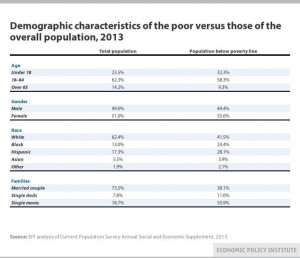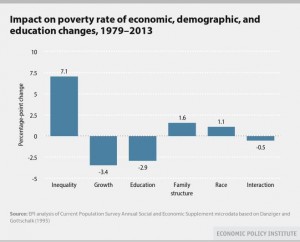Part 2 of the Overparenting Series.
Helicopters, curlers, and lawnmowers defined and differentiated. Previously, I discussed the proliferation of metaphors that refer to Parentus Overprotectus – when parents overparent, overindulge, overprotect, and that these are concepts that are not exclusive to the U.S. In this installment, I consider the helicopter parent (in the U.S.), the curling parent (in Denmark), and the lawnmower parent (in England). These metaphors have different origins, disciplinary expertise of the originators, and meanings. They are inseparable from the cultural context in which they originated.

A chronology of overprotective parenting metaphors reveals a picture that starts with Israeli psychologist Haim Ginott in his 1969 book Between Parent and Teenager. The oft-cited quote, “Mother hovers over me like a helicopter and I’m fed up with her noise and hot air.… I’m entitled to sneeze without explanation” shows the use of helicopter as simile, not metaphor, for a certain type of parenting.
Jump forward to the early 1990s, when education consultant Jim Fay and medical doctor Foster Cline introduced Parenting with Love and Logic to a largely American audience. In their parent typologies, the term “helicopter parent” is presented as one of two negative types of parents, in which parents hover over their offspring and, as is often left out of the definition, rescue them when things go badly. This metaphor has been present in their writing, workshops, and popular media ever since, and has spread internationally to the point where scholars from countries outside of the U.S. reference the term as they construct new ones.

Denmark is often cited as a place where hovering parents are less likely to be seen and heard. But this place is not exempt from a Parentus Overprotectus metaphor. In 2004, Danish psychologist Bent Hougaard coined the metaphor “curling parent” in his book Curling-Forældre og Service-Børn (Curling-Parents and Service-Children, translated into Norwegian and Swedish, but not English), referring to the winter sport where a “sweeper” uses a broom to smooth the ice in such a way that the polished granite stones move across the ice to a desired end. In the same way, parents smooth the icy path for their little stone children to prevent them from struggle. And the children end up feeling entitled to whatever they want to make their lives easier as they grow. Parents are, as the title suggests, at the service of their little stone children. I’m fairly certain there’s a Hans Christian Andersen fairy tale that could illustrate this.
Lawnmower parents have a British origin. A British pair of “behavioural research strategist” authors Kieran Flanagan and Dan Gregory coined the term in a 2014 book about business entitled Selfish, Scared, & Stupid. This is a text marketed to business people seeking advice on how to effect change, have strong leaders, make more money, and get a grip on how real people work. The authors argue that, in reality, people are selfish, fearful, and stupid, traits that have been glossed over as children are raised with parents who clear the way and tell them that they are perfect. Lawnmower parents, then, are partly to blame for (especially millennial generation) business people’s unreal expectations for themselves and others because too many paths have been cleared for children who grow up incapable of handling failure. Similar arguments are made by U.S. authors who discuss problematic characteristics of the millennial generation that stem from parenting practices, using the helicopter metaphor.

Helicopter, curler and lawnmower parents have been compared to one another in popular and academic venues inconsistently. Sometimes they are presented as the same, sometimes as versions of the same thing, and sometimes they are presented as part of an evolving sequence. Specifically, one scholar has said that curling and helicopter parents are “equivalent metaphor(s).” Another articulates that curling is “much like lawnmower parenting,” or that these latter two “correspond to” each other. And finally, in a twist that suggests etymological evolution, one writer offers that helicopter parenting has evolved into lawnmower parenting, as if the latter is a more aggressive and potent version of the former. I can’t help it: do they mean that this could be a hard-to-kill immune-from-gunfire new kind of genetically modified dinosaur killing machine type of parent? You laugh, but I assure you I am taking these metaphors seriously. I mean, just for the fun of it.
Cultural context. What I like most about sociology is the ability to examine cultural context. To see the forest amidst the trees. Overprotective parenting metaphors come not just from different places, but also from different disciplines – from psychology, education, medicine, and business. These are disciplinary contexts that, like nations, have their own cultures. Parentus Overprotectus, then, becomes about individual well-being, learning abilities, bodies, and the bottom line. What all of this does is construct parenting and childhoods as individualized projects that require measurable outcomes and a dose of imagery-induced anxiety at a cultural level.
Hovering helicopters, curlers brushing away obstacles on the ice, and lawnmowers clearing a path in the grass have important differences as they represent overprotective parenting, yet it is easy to conflate their definitions. The choice of imagery matters in the cultural context. Lumping them into one category of overprotective parents (most often as “helicopter parents”) may misrepresent important yet subtle qualities that the image seeks to convey. What this review reveals is that each of the terms has stemmed from a different country, a different disciplinary lens, and a different time period. Helicopter parenting is about hovering and rescuing, curling parenting is about carefully smoothing ice for an idealized version of childhood, and lawnmower parenting is about mowing over all obstacles so that children have a visibly clear and easy path, with no harmful sticks or tall grass blades standing in their way. The latter two are about prevention, the first one about fixing things after the fact.
For fun, I like to think about the use of a large metal machine used in military exercises as particularly American, the image of a parent who already knows the rules of most winter sports on account of the fact that it’s cold in Scandinavia as particularly Danish, and the clearing of a smooth row of mowed green like Wimbledon and paths in the symmetrical gardens at the Queen’s residence as particularly British. Or maybe that’s a stretch. Over the next couple days, you can do the same for Parentus Overprotectus metaphors beyond these three countries, in preparation for my next installment.
In the next post, I discuss how these metaphors, despite their varying cultural context, disciplinary history, and etymology, have a very important common theme: social class matters. And I offer a metaphor of my own to add to the mix.
Michelle Janning is Professor of Sociology at Whitman College in Walla Walla, Washington, and serves as Co-Chair of the Council on Contemporary Families. She has taught and served as a pedagogical consultant for the Sociology and Child Development and Diversity programs at the Danish Institute for Study Abroad. She also let her son ride public transportation in Copenhagen by himself when he was eight years old. More about her can be found at www.michellejanning.com.










